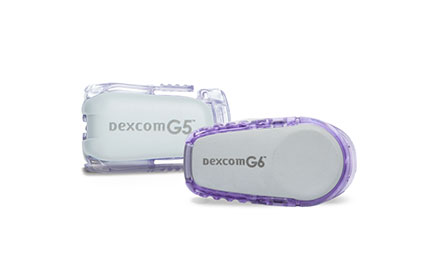People with Type 1 Spend More on Supplies Than on Insulin
While bills to lower diabetes spending focus on insulin price caps, most T1Ds spend more out-of-pocket on diabetes supplies

The push for more affordable insulin has finally gained some national attention in recent years. State legislation capping the price of insulin has been passed in eight states while numerous bills focused on reducing insulin costs have been introduced in the House and Senate.
But a new financial study looking at the broader costs of type 1 diabetes calls into question how effective such measures will truly be in reducing the financial burden of living with this disease.
Surprising Results of T1D Spending Analysis
The research from Michigan Medicine, which was published in JAMA last month, looked at the diabetes-related out-of-pocket costs of over 65,000 American type 1 patients, ages 1 to 64, who were enrolled in private insurance.
Spending was broken down into four categories: insulin, diabetes-related supplies, other types 1 diabetes-related services (including oral medication), and unrelated medical services.
Overall, results from the analysis showed that the average person living with type 1 spends around $2,500 per year out-of-pocket for health care, while 8% of T1Ds spend over $5,000 per year.
Only about 18% of out-of-pocket spending went to buying insulin.
Most patients, especially younger type 1s, spent more money on diabetes-related supplies such as CGM sensors, pump supplies, and test strips than they did on insulin.
In patients utilizing pump and CGM therapy, the cost for diabetes-related supplies was the highest at around $1,037 per year compared to only $435 per year for insulin. Patients on either a pump or a CGM still spent more on these supplies than they did on insulin. Only patients utilizing pens or needles and traditional glucometers alone were likely to spend less on supplies than on insulin.
Measures to Reduce T1D Out-of-Pocket Burden
As healthcare costs skyrocket across the board, the inflated costs of insulin specifically, has become a popular talking point for politicians. This newer focus on the financial burden of living with type 1 has sparked legislation across the country.
Currently, eight states have bills in place meant to reduce the cost of insulin.
Colorado was the first to pass such a law, which went into effect on January 1st of this year. Illinois, Maine, New Mexico, New York, Utah, Washington, and West Virginia all have bills set to take effect in 2021.
In addition to these state-mandated price caps, there have also been a number of bills proposed in the House and Senate aiming to reign in out-of-control insulin pricing.
The Affordable Insulin Act, the Insulin Price Reduction Act, and the Affordable Insulin for All Act were all introduced within the last two years. And, just recently, the President signed an executive order capping insulin prices for seniors on Medicare.
The problem? Every one of these bills has a single focus: Insulin.
Not one of the bills effectively addresses the other costs of living with type 1. Since these expenditures represent over 80% of the out-of-pocket healthcare costs a T1D endures, they really should not be left out of the conversation.
The Importance of Affordable Diabetes Supplies
Insulin, of course, is the one thing no person with type 1 can live without. But, as we enter into a new age of diabetes care and treatment, the argument could be made that other diabetes supplies, specifically those required for CGMs and pumps, are just as crucial to the longterm health of those living with this condition.
Insulin pumps were a huge improvement over traditional multiple daily injections when they first came to the market. And now, as the technology behind these pumps continues to improve, they are quickly becoming a must-have for reducing secondary complications and management burden.
Surprisingly, though, it is the CGM that has proven to be the most effective single tool in helping patients achieve near-normal blood sugars.
Compared to those who check their blood sugar using traditional finger pricks, CGM users are more likely to have a lower A1c and less likely to develop secondary complications, regardless of if they use MDI or an insulin pump.
Of course, the most notable new development for treating type 1 is the use of automated insulin delivery (AID) systems that utilize both a pump and CGM.
AID systems have been shown to greatly reduce hyper and hypoglycemic events and go a long way to improve the psychosocial burdens incurred by those living with T1D.
Unfortunately, the out-of-pocket costs of managing diabetes with an AID system are monumental–requiring more than twice the amount of money spent on insulin per year.
If lawmakers are truly interested in reducing the financial burden incurred by those living with type 1 diabetes, the focus should not be solely on lowering the price of insulin.
Instead, these bills need to take into account the positive effect wider access to advanced diabetes tech would have on the longterm healthcare costs associated with diabetes and work to make these tools, along with insulin, more affordable to T1Ds everywhere.







